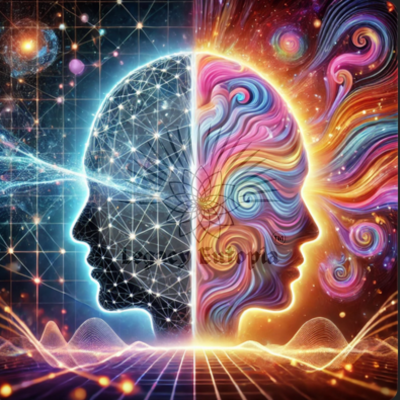About Gateway Experience Expansion Program
The Gateway Experience, as detailed in CIA documents, is a consciousness-expansion program developed by the Monroe Institute and later analyzed by the CIA for its potential in remote viewing and mind exploration.

Gateway Experiment (you are here)
A Water Visualization Meditation
This program revolves around the concept of altering brainwave frequencies using binaural beats, a technique that synchronizes brain hemispheres to induce altered states of consciousness.
Participants engage in various exercises that promote relaxation, focus, and out-of-body experiences, enabling them to explore what the program refers to as “non-physical realities.” The Gateway process aims to help individuals access higher states of awareness, control their consciousness, and interact with their inner resources more effectively.
The CIA’s interest in the Gateway Experience was part of broader research into remote viewing and other psychic phenomena under the Stargate Project. The idea was that training individuals to transcend ordinary states of consciousness could potentially provide intelligence-gathering advantages by accessing information remotely through enhanced mental capabilities.
If you’re interested in exploring the original CIA documents on the Gateway process, they are available via the agency’s Freedom of Information Act (FOIA) reading room, such as. ps://www.cia.gov/readingroom/docs/CIA-RDP96-00788R001700270006-0.pdf).
Focus Levels of the Gateway Experience
The Gateway Experience involves a series of “Focus Levels” that represent different states of consciousness, helping participants move beyond ordinary perception through audio-guided exercises using binaural beats. These levels aim to achieve greater mental clarity, out-of-body experiences, and heightened awareness of non-physical realities.
Some of the primary focus levels include:
- Focus 3 – Early mental relaxation and synchronization.
- Focus 10 – “Mind awake, body asleep” state, enabling deep relaxation.
- Focus 12 – Expanded awareness beyond the limits of the five senses.
- Focus 15 – A state of “No-Time,” where time no longer holds significance.
- Focus 21 – Exploration of distant, non-physical realities.
- Focus 27 – A realm associated with transition and non-physical energy, linked to experiences of the afterlife.
The progression through these focus levels gradually helps participants disconnect from physical reality, improve mental focus, and potentially access intuitive insights. This structured journey supports the goal of the Gateway Experience, which is to transcend space and time constraints by expanding consciousness systematically.
You can explore the original documents and further details through the CIA’s declassified reading room and Monroe Institute materials, as referenced in their study and assessments of the Gateway process. These resources provide insight into how these states were employed for both personal and military purposes, as well as how they relate to brain synchronization techniques.
Full Report
For more information, you can access the full report v/readingroom/docs/CIA-RDP96-00788R001700210023-7.pdf) and https://www.cia.gov/readingroom/docs/CIA-RDP96-00788R001700210016-5.pdf.
Explaining the Right and Left Brain Hemisphere
The right hemisphere of the brain is generally associated with creativity, imagination, intuition, and artistic abilities. It handles tasks that involve non-verbal processing, recognizing patterns, spatial awareness, and emotional expression. This hemisphere excels in activities like drawing, music, daydreaming, and abstract thinking.
In contrast, the left hemisphere is associated with logic, analytical thinking, and language. It tends to process information sequentially and is responsible for tasks such as mathematics, reading, writing, and reasoning.
Although this traditional “left-brain vs. right-brain” distinction is often used to describe tendencies, recent neuroscience suggests that both hemispheres work together in most cognitive functions. Creative activities, for instance, still require logic and structure, meaning the brain operates more holistically than previously thought.
